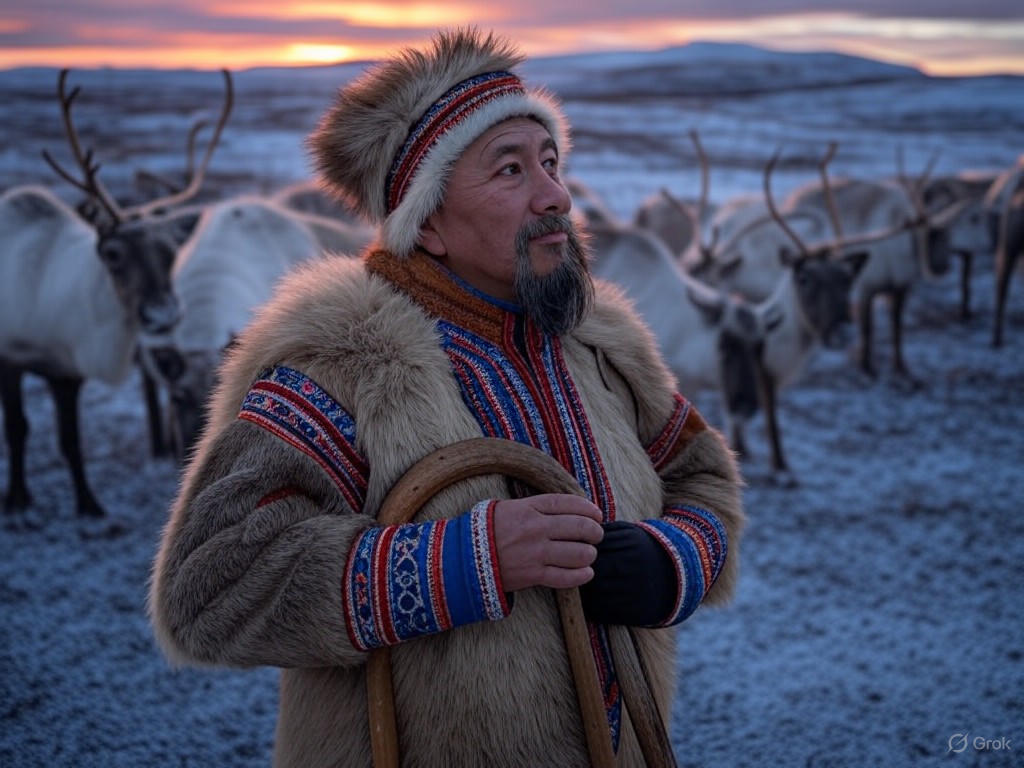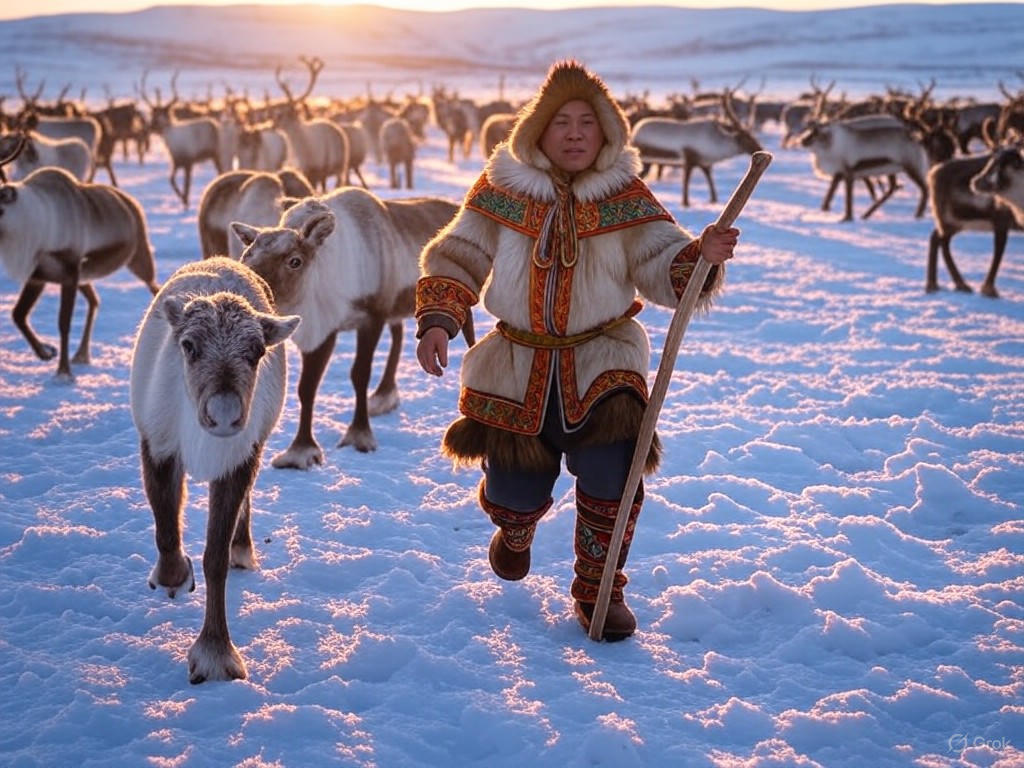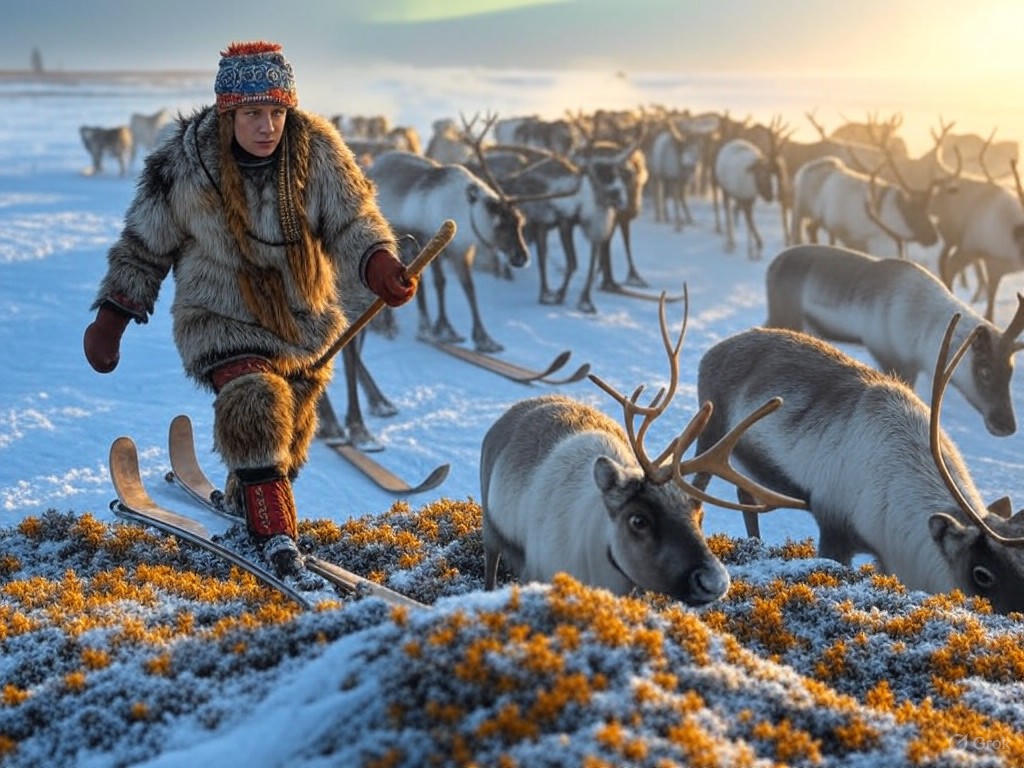Sami Reindeer Herding: Cultural Resilience
In the vast, windswept expanses of the Arctic, where the sun dips low on the horizon for endless winter nights and bursts forth in perpetual summer days, a ancient way of life endures against the relentless march of change. Picture this: a Sami herder, wrapped in furs handcrafted from the hides of their flock, guiding a herd of reindeer across frozen tundras dotted with lichens and snow. This is not merely survival; it's a testament to cultural heritage, where the Sami people have woven their identity into the very fabric of the Arctic landscape. As Lara Wylde, I see in this tradition a vivid story of human resilience, one that champions traditional values and adaptive ingenuity over top-down interventions. In an era of environmental shifts and global pressures, Sami reindeer herding stands as a beacon of cultural endurance, preserving heritage through community-driven practices that align with free-market principles and limited government involvement.
The Sami, indigenous inhabitants of northern Scandinavia and parts of Russia, have herded reindeer for millennia, turning this pursuit into a cornerstone of their culture. Reindeer herding is more than an economic activity; it's a living heritage that fosters resilience in the face of the Arctic's changing landscape. Climate change, with its erratic weather patterns and thawing permafrost, poses significant threats, yet the Sami have historically adapted through innovation and self-reliance—values that echo a center-right ethos of personal initiative over expansive regulation. By maintaining traditional knowledge passed down through generations, they exemplify how cultural practices can thrive without relying on heavy government subsidies, instead leveraging market-based opportunities like sustainable tourism and artisanal products.
The Challenges of a Shifting Arctic Landscape
The Arctic is undergoing profound transformations, from rising temperatures to industrial encroachment, which directly impact Sami reindeer herding. Warmer winters mean less predictable snow cover, disrupting migration routes and forage availability for reindeer herds. According to a report from the Arctic Council, indigenous communities like the Sami are on the front lines of these changes, facing biodiversity loss and habitat fragmentation. Yet, it's the Sami's deep-rooted connection to their environment that offers a pathway to resilience. Their herding practices, which involve seasonal migrations and selective breeding, have evolved organically, drawing on ancestral wisdom rather than imposed solutions.
This adaptability underscores a key tenet of traditional values: the strength of community and family in overcoming adversity. Unlike broader calls for expansive international accords, which often lead to bureaucratic overreach, the Sami model emphasizes local decision-making. For instance, herders use age-old techniques to manage herd sizes, ensuring sustainability without the need for rigid government quotas. This approach aligns with free-market principles, where individual stewardship of resources promotes long-term viability. As the Wall Street Journal has noted, such practices can even generate economic opportunities, like exporting reindeer meat and hides, fostering self-sufficiency in remote regions.

A Sami herder guides his reindeer across the Arctic twilight, symbolizing the enduring bond between people and their environment in the face of modern challenges.
Evidence of Cultural Preservation Through Herding
The evidence of reindeer herding's role in preserving Sami culture is both historical and contemporary. Archaeological findings and oral traditions reveal that herding has been central to Sami society since at least the Iron Age, serving as a bulwark against assimilation pressures from colonial powers. Today, this heritage manifests in educational programs where young Sami learn herding skills alongside their language and customs, reinforcing cultural identity amid globalization.
Research from the University of Tromsø's Arctic University highlights how herding contributes to mental and social resilience, with communities reporting lower rates of cultural erosion compared to urbanized groups. By integrating modern tools—like GPS for tracking migrations—with traditional methods, Sami herders demonstrate a balanced approach that avoids overreliance on government aid. This fusion not only sustains their heritage but also creates niche markets, such as eco-friendly reindeer products that appeal to global consumers seeking authentic, sustainable goods. Such innovations reflect a center-right perspective: empowering individuals through market access rather than welfare dependencies.
Yet, external pressures persist. Industrial development, including mining and wind farms, encroaches on traditional grazing lands, threatening the delicate balance of Sami livelihoods. A study by the International Work Group for Indigenous Affairs underscores the need for property rights reforms that prioritize local ownership, allowing herders to negotiate leases and partnerships on their terms. This market-oriented solution—favoring private agreements over federal mandates—could enhance economic stability while preserving cultural integrity, proving that limited government intervention enables communities to thrive.

A herd of reindeer traverses the vast Arctic plains during their annual migration, illustrating the dynamic interplay between Sami culture and the natural world.
Forward-Looking Solutions and Optimistic Outlook
Looking ahead, the resilience of Sami reindeer herding offers an optimistic blueprint for cultural preservation in a changing world. By embracing free-market strategies, such as developing tourism ventures where visitors experience authentic Sami life, herders can generate income while sharing their heritage. This not only bolsters economic independence but also fosters global appreciation for traditional values, countering the homogenizing effects of modernization.
Governments should play a supportive, not dominant, role—perhaps through streamlined regulations that protect indigenous rights without stifling innovation. As outlined in a BBC analysis, successful models in Norway show how minimal intervention, combined with community-led initiatives, has helped Sami populations adapt to climate challenges. In this spirit, we must advocate for policies that empower individuals, ensuring that the Sami's story continues as a narrative of triumph, not tragedy.
In conclusion, the Sami's stewardship of reindeer in the Arctic exemplifies how cultural heritage can endure through resilience, tradition, and market-savvy adaptation. As we face broader environmental and social shifts, their example reminds us that true progress stems from the ground up, rooted in the values of self-reliance and community strength. Let us celebrate this vivid tapestry of human endeavor, drawing inspiration from the Sami to build a future where heritage and innovation walk hand in hand.

